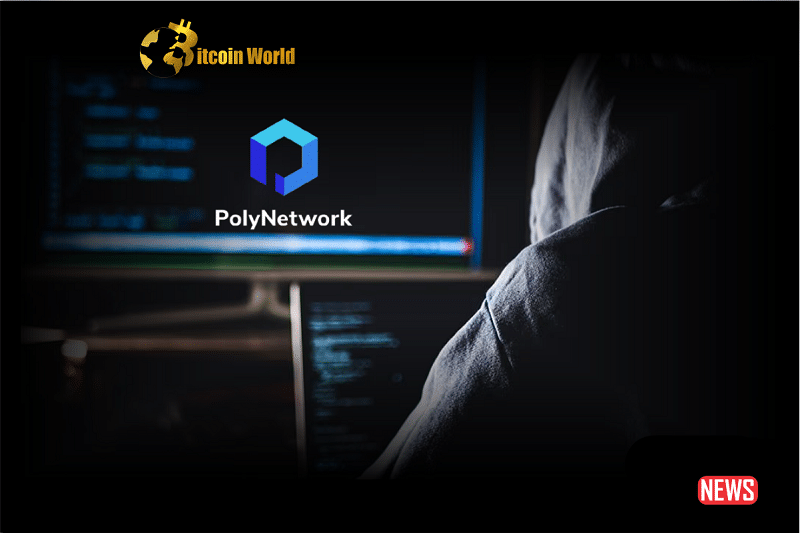In a shocking turn of events, the Poly Network bridge suffered yet another major hack, resulting in a potential loss of $44 billion in BUSD, BNB, and SHIB. This incident marks the second breach for the platform in just two years, following a theft of $600 million in 2021. However, despite the massive amount at stake, the attacker’s attempts to monetize the stolen funds were thwarted by a lack of liquidity on certain blockchains. Let’s delve into the details and understand what happened.
Poly Network Hack: The Minting of a Fortune
On Sunday, July 2nd, the Poly Network bridge, an essential platform facilitating interoperability between different blockchain networks, fell victim to a hacking incident, prompting a temporary suspension of its services. This breach is a repeat offense for the protocol, as it previously suffered a theft of $600 million in 2021. In this latest breach, the compromised cryptocurrencies amounted to an astonishing $42 billion.
The Attacker’s Exploitation and Limited Monetization
The unidentified attacker leveraged a vulnerability in the platform’s smart contract, allowing them to mint an unlimited number of tokens from the Poly Network pool. By manipulating a function, the hacker created a malicious parameter containing a fake validator signature and a block header, enabling them to generate approximately 100 million BNB and 10 billion BUSD on the Metis blockchain. Additionally, they minted a staggering 999 trillion SHIB on the Heco network, along with various minor tokens across Polygon, Avalanche, BNB Chain, and OKX Chain.
While this hack might appear to be the largest in crypto history due to the astronomical figures involved, the attacker’s ability to cash in was severely limited. The absence of liquidity on the affected networks meant that the hacker could only monetize a meager $5 million. The Poly Network team promptly responded to the incident by notifying on-chain analytics companies and major crypto projects, leading to the blocking of liquidity taps for the affected assets and networks.
Liquidity Is Everything: Protecting the Crypto Ecosystem
The Poly Network bridge hack underscores the importance of liquidity in decentralized finance (DeFi) protocols. In contrast to the 2021 breach where the North Korean group Lazarus made off with $600 million, the lack of liquidity played a crucial role in preventing a massive sell-off of multiple cryptocurrencies this time. The affected infrastructures swiftly took action to minimize the hack’s impact by shutting down liquidity pools where the attacker could have converted the illicitly minted coins.
The Metis blockchain team reassured their community, including Binance users, that there wasn’t enough liquidity on their network to sell BNB and BUSD, the most vulnerable assets. Changpeng Zhao, the founder of Binance, also emphasized that the incident would not harm BNB and BUSD since Binance does not accept deposits on Metis networks. Consequently, without decentralized pools for swapping the minted funds or supporting exchanges for trading, the stolen assets remain worthless.
Collaboration for a Secure Crypto Future
During hacks of this magnitude, cooperation between key centralized infrastructures becomes paramount to avert disastrous consequences. As regulators and on-chain tracking companies scramble to identify the attacker who absconded with $5 million, the crypto community faces the inconvenience of restricted access to certain pools and interoperability services. It remains to be seen what new revelations will emerge from this captivating story.
Conclusion: Learning from Poly Network’s Misfortune
The Poly Network bridge hack raises compelling questions about the nature of bridges, which enable seamless transitions between blockchains but also present significant vulnerabilities. Crypto pirates have long targeted such platforms, with losses reaching a staggering $2.5 billion since 2017. Despite the Poly Network team’s unfortunate experiences of being hacked twice within a short span, it is crucial to address the security concerns surrounding bridges to safeguard the crypto ecosystem.
In summary, the Poly Network bridge hack serves as a reminder of the ever-present risks in the crypto world. Although the attacker failed to monetize the majority of the stolen funds, the incident highlights the importance of liquidity, collaboration, and enhanced security measures to protect decentralized protocols and ensure the continued growth and stability of the cryptocurrency industry.














